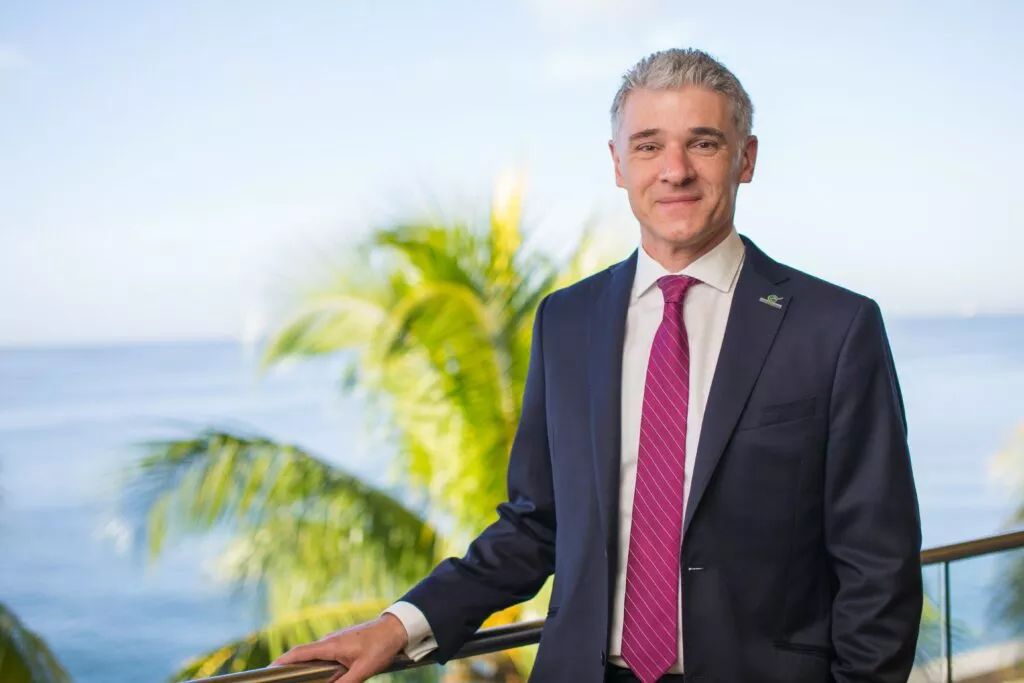‘Good that Guyana fast-tracked oil and gas development’ – Head of T&T Energy Chamber
By Vishani Ragobeer
Vishani@newsroom.gy
The fast-paced development of Guyana’s oil and gas industry, given ongoing calls for the use of more renewable energy, has been lauded by the President and Chief Executive Officer (CEO) of the Energy Chamber of Trinidad and Tobago Dr. Dax Driver.
In 2019, just four years after significant oil finds were recorded, Guyana started producing oil from the Liza Phase 1 field in the prolific offshore Stabroek Block and by 2022, the country started producing oil from a second field- Liza Phase 2– in that Block.
This accelerated pace of development is not common.
Dr. Driver, however, said that it was crucial for Guyana to develop the industry quickly, given the growing focus on more renewable energy sources.
“For countries like Guyana and Suriname, with these massive oil resources in place, and some of them transitioning into reserves and some being produced, priority has to be (the) fast-tracked development of those resources.
“This is something which Guyana has done extremely well since its first discovery. It’s a world leader in fast-tracking its discoveries,” Dr. Driver said during a webinar on Wednesday.

Had the country delayed the startup of production, the Trinidadian Energy Chamber President believes that Guyana might have found itself with “stranded assets”.
Exploration in the 6.6 million-acres Stabroek Block by ExxonMobil’s affiliate Esso Exploration and Production Guyana Limited (EEPGL), has so far led to multiple discoveries that could result in production of 11 billion barrels of oil.
The company, along with co-venturers Hess and CNOOC, has two vessels producing, storing and offloading oil in the block. One, from Liza Phase 1, is producing an estimated 130,000 barrels a day, while the second, from Liza Phase 2, began production in February, moving production to 220,000 barrels a day.
The third project, Payara, could get going towards the end of next year and the fourth project, Yellowtail, could begin production in 2025.
Altogether, the four projects could see Guyana producing 750,000 barrels of oil per day by the end of 2025. By the end of the decade, further developments could see Guyana producing one million barrels of oil daily.
Still, the oil industry is notorious for emitting carbon dioxide and other harmful greenhouse gases which contribute to the climate crisis, causing catastrophic events such as rising sea levels and flooding.
With the growing focus on using more renewable energy sources to slash those emissions from oil and other fossil fuels, Dr. Driver reasoned that Guyana may have been unable to eventually exploit its resources.
Since the country has commenced production, though, Dr. Driver backed plans to use the influx of expected oil wealth to help the country transition to the use of more renewable energy sources be it solar, wind or hydropower.
Guyana plans to create an energy mix of natural gas produced offshore (which is believed to be more environmentally-friendly than oil), solar, wind and hydropower to meet its growing electricity demand. And by 2030, the country expects that about 70 per cent of its fossil fuel use will be replaced by these renewable energy sources.
“As you are bringing renewables and natural gas on the grid, you need to invest heavily in the grid itself,” Dr. Driver, however, cautioned local authorities.
Interestingly, Dr. Driver also contended that fossil fuel production within the Caribbean will contribute minimally to the climate crisis.
The real problem, he said, is the continued burning of coal for energy production- something done in many developed countries to meet their energy demand.
His sentiments are similar to those from the outgoing Chairman of the Caribbean Community (CARICOM) and Prime Minister of Belize John Briceño, who lamented that Caribbean states contribute the least amount of harmful emissions but are burdened with the responsibility of foregoing economic gains now to slow the climate crisis.






